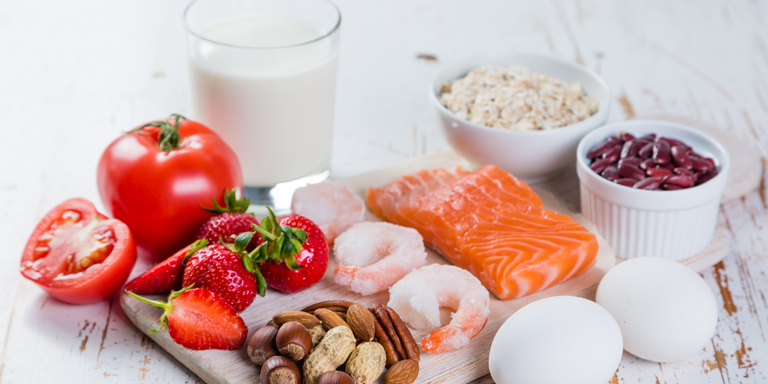Lactose intolerance
One in five people here in Switzerland suffer from lactose intolerance. It is caused by the lack of an enzyme in the digestive tract.

Table of contents:
In lactose intolerance the digestive enzyme lactase is either not produced or only in insufficient quantities. Consumption of dairy products containing lactose results in flatulence, diarrhoea or abdominal pain. The enzyme is necessary to break down lactose (milk sugar) into its constituents and digest it.
Causes and triggers
Milk sugar (lactose) is a disaccharide, comprising galactose and glucose. Lactose occurs naturally in the milk of mammals. Small amounts of lactose are added to foods but are also used in industrial production as well as in finished products, seasonings and medicines.
In normal circumstances, lactose is split into its two constituents by the enzyme lactase in the small intestine because this is the only way they can be absorbed via the intestine into the blood. If a lactase deficiency exists because of a hereditary condition or due to some other disease, this is known as lactose intolerance. Instead of entering the blood, the lactose enters the large intestine undigested, where it is then fermented by bacteria.
Symptoms
The gases formed in the large intestine and the accumulation of water lead to the typical symptoms, such as flatulence, abdominal cramps, diarrhoea, nausea, wind and constipation. The extent of the symptoms varies significantly, depending on individual tolerance and the quantity of lactose consumed. No symptoms occur, however, if only traces of lactose are present in the food consumed.
Symptoms typically occur 30 minutes to 2 hours after ingestion of food containing lactose.
Lactose intolerance is neither potentially life-threatening nor harmful to the intestinal mucosa. On the other hand, it can be very unpleasant and inhibiting for sufferers.
Diagnosis
Sufferers often notice that they do not tolerate milk and dairy products well and observe typical symptoms of lactose intolerance. Use of a food and symptom diary to record the food eaten and the symptoms observed and when can be helpful for the doctor or specialist.
The H2 breath test and a genetic blood test are reliable methods for confirming the diagnosis.
Other food intolerances such as fructose malabsorption and coeliac disease can trigger similar symptoms. In babies and infants, an allergic reaction to milk protein might also be responsible for the symptoms.
Treatment
Symptoms can be reduced with a low-lactose diet. A full lactose-free diet is usually unnecessary. Once diagnosed, sufferers should initially follow a lactose-free diet for a short period in order to determine their individual tolerance of lactose in a subsequent test phase. This involves gradually increasing the quantity of lactose consumed, with the possible support of a specialist dietitian.
Tips and tricks
- Mature cheese is naturally lactose-free.
- Butter contains only traces of lactose and is therefore well tolerated.
- Sour milk products contain less milk sugar than normal milk, because bacteria convert the lactose to lactic acid as the milk sours.
- Lactose is usually absorbed more effectively if consumed with foods rich in fats or protein.
- Small quantities of foods containing lactose (12 g a day), are usually better tolerated if consumed over the course of the day.
- A large number of lactose-free specialist products are available from retailers and specialist shops. These differ from standard dairy products only in the quantity of lactose they contain. The quantities of calcium, proteins and other nutrients are otherwise the same.
- There is also the option of taking the missing enzyme lactase in capsule form shortly before a meal containing lactose.
- When shopping, look out for products with the Allergy Seal of Quality, these are particularly suitable for people with allergies and intolerances and are recommended by aha! Swiss Allergy Centre.
Editors: aha! Swiss Allergy Centre in co-operation with the Scientific Advisory Board.



